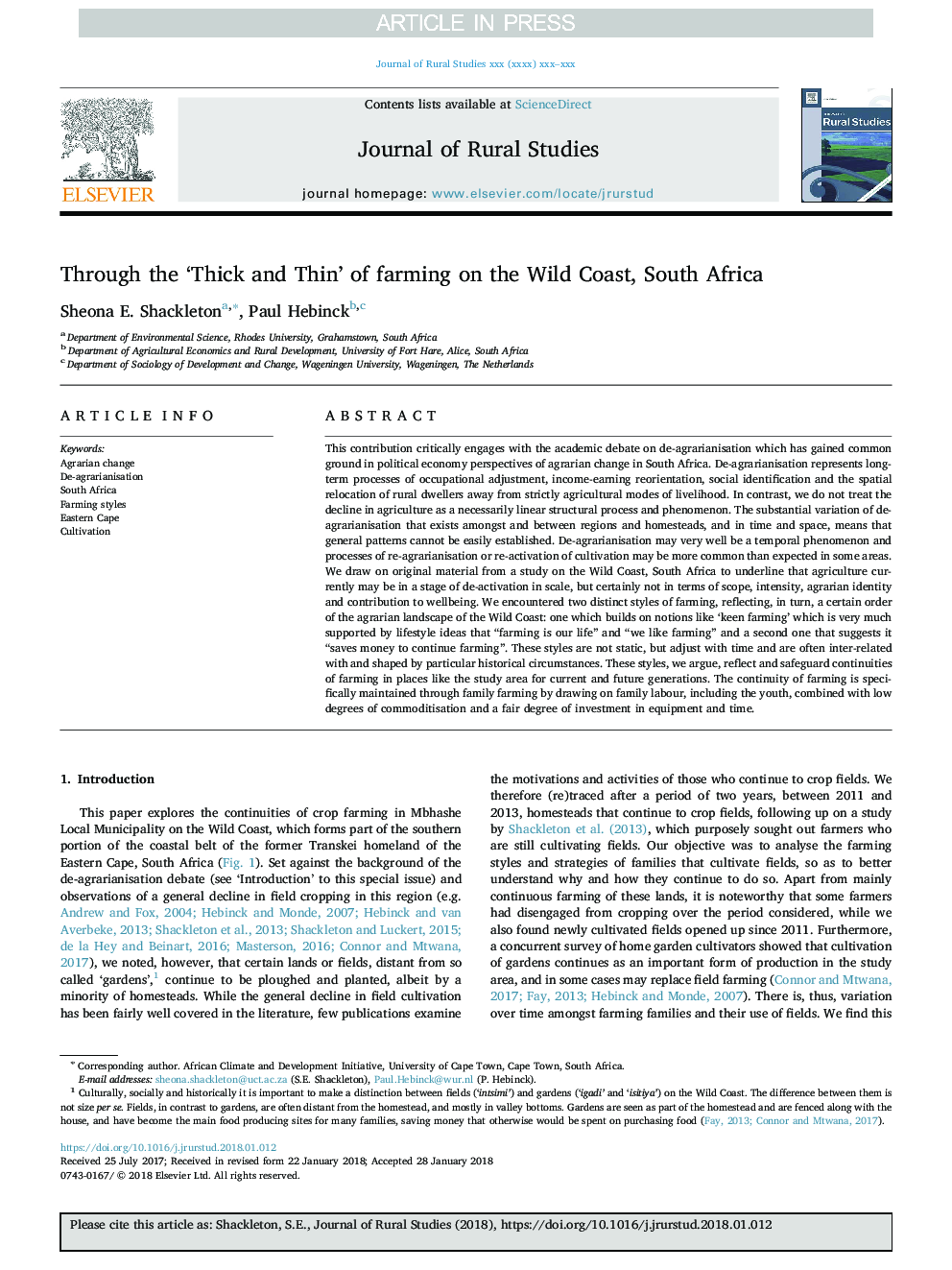| Article ID | Journal | Published Year | Pages | File Type |
|---|---|---|---|---|
| 6545257 | Journal of Rural Studies | 2018 | 13 Pages |
Abstract
This contribution critically engages with the academic debate on de-agrarianisation which has gained common ground in political economy perspectives of agrarian change in South Africa. De-agrarianisation represents long-term processes of occupational adjustment, income-earning reorientation, social identification and the spatial relocation of rural dwellers away from strictly agricultural modes of livelihood. In contrast, we do not treat the decline in agriculture as a necessarily linear structural process and phenomenon. The substantial variation of de-agrarianisation that exists amongst and between regions and homesteads, and in time and space, means that general patterns cannot be easily established. De-agrarianisation may very well be a temporal phenomenon and processes of re-agrarianisation or re-activation of cultivation may be more common than expected in some areas. We draw on original material from a study on the Wild Coast, South Africa to underline that agriculture currently may be in a stage of de-activation in scale, but certainly not in terms of scope, intensity, agrarian identity and contribution to wellbeing. We encountered two distinct styles of farming, reflecting, in turn, a certain order of the agrarian landscape of the Wild Coast: one which builds on notions like 'keen farming' which is very much supported by lifestyle ideas that “farming is our life” and “we like farming” and a second one that suggests it “saves money to continue farming”. These styles are not static, but adjust with time and are often inter-related with and shaped by particular historical circumstances. These styles, we argue, reflect and safeguard continuities of farming in places like the study area for current and future generations. The continuity of farming is specifically maintained through family farming by drawing on family labour, including the youth, combined with low degrees of commoditisation and a fair degree of investment in equipment and time.
Related Topics
Life Sciences
Agricultural and Biological Sciences
Forestry
Authors
Sheona E. Shackleton, Paul Hebinck,
